Lichenes, whistleblowers of air pollution
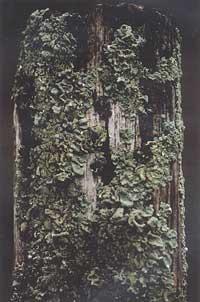
Some of these techniques use plants, especially lichen. The plants, being more sensitive than man, suffer before the air pollution, so to know if there is air pollution in a given place, it is enough to analyze the situation of certain species, often selected as biological indicators, or of the entire local plant community.
These methods have several advantages. On the one hand, they are much cheaper and faster methods than conventional analytical methods, and on the other hand, unlike physical-chemical methods, they allow to know the influence of the combinations of different pollutants and their concentration and duration in ecosystems. On the contrary, the use of biological indicators does not allow to obtain specific quantitative results, and if you want to know the concentrations of polluting substances it is necessary to conform with estimates.
Lichen, appropriate biological indicators
The lichenes take from the atmosphere all the nutrients they need, so they maintain a close physiological relationship with the outside environment. In addition, they lack an outer layer or protective cuticle and regulatory mechanisms for the exchange of gases and liquids, and due to the numerous lagoons that present their stems, they have a great facility of storage of toxic substances. In addition, they are very aesthetic, that is, they have very concrete ecological demands and are very sensitive to any changes that occur in the environment.
Therefore, they are very sensitive to pollution and, consequently, they constitute very appropriate biological indicators.
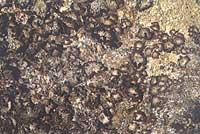
There are many substances that affect the lichen, including sulfur oxides and nitrogen oxides, aldehydes, ketones and nitrates of peroxiacil, phosphates, heavy metals, and some hydrocarbons, fluorinated substances and radioactive isotopes, but without a doubt, sulfur dioxide and acid rain caused by it are the ones that most influence today.
All these substances cause the lichen to suffer obvious physiological, morphological or structural alterations, which frequently disappear.
However, the sensitivity of lichen is not always the same, since the environmental conditions and physiological state of lichen influence a lot. In general, young lichens are more sensitive than adults, while leafy and fruticulosus are more sensitive than scales and crustaceans. On the other hand, the climate and pH of the substrate, together with other factors, can reduce or increase the incidence of contamination.
Methods that use lichen
Since 1970 the use of lichen has acquired great strength and various techniques have been developed. All of them can be classified into three great types.
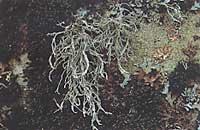
On the one hand, lichens are used as biological indicators. As mentioned above, lichen usually grows in very specific environmental conditions. Therefore, in areas where the concentration of certain substances is high, there is no growth of any type of lichen, but the presence of certain species capable of growing. For this reason, the presence in the place of study of some of these lichen indicates the presence of these substances. In these cases, a specific liquid is said to be a biological indicator of a certain substance.
An example of this is the nitrogen lichen. These grow in areas where the concentration of nitrogenous substances (ammonia, nitrite and nitrates) is high. Consequently, the presence of nitrogen lichen in areas that did not have this type of liquid indicates the existence of pollution by nitrogenous substances. This phenomenon is relatively common in industrial and urban areas, and especially in rural areas where nitrogenous fertilizers are used, especially in gaseous or liquid state.
Something similar occurs with acidophilic lichen (which grow on low pH substrates). The growth of acidophilic liquid in basic substrates indicates the presence of some acidifying factor of the medium (often acid rain generated by the SO2 that is emitted into the atmosphere).
Another method is that of estimation. When contaminating substances appear in one place, the local licenic flora suffers a series of alterations. On the one hand, the highly sensitive liquid to these polluting substances disappear, being only the most resistant. In addition, the higher the concentration of pollutants or more sustainable they are, the more species that disappear and the less those that remain. On the other hand, when analyzing the method of estimation, it has been seen that in some cases new species will appear capable of supporting high concentrations of these substances.

Therefore, analyzing the licenic flora of a given place and comparing it with the flora of sites with similar ecological conditions but without pollution, we can know quite well the degree of contamination of the study area.
To be able to use this method it is necessary to realize numerous exhaustive inventories of the licenic flora, for which it is necessary to know well the taxonomy of the lichen. However, it has a number of advantages, since it is very sensitive and allows to know the effects of pollution following the evolution of the licenic flora. However, it presents an important drawback, that is, the need to perform numerous observations of great work that allow to accurately estimate the degree of contamination using inventories of licenic flora.
The third and last method is that of bioaccumulation. Toxic elements and molecules by different lichen (compounds containing fluores, heavy metals, radioactive elements, etc.) It accumulates them in its stem. Therefore, they are frequently used to know the presence or not of these toxic substances and the evolution of the pollution caused by these substances (direction of dispersion, scope, concentration of substances in each place, etc.) Also to meet him.
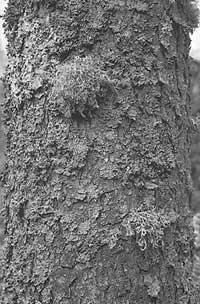
In this field, the work carried out in the European archaic regions has been very important. The basis of the livestock of these territories is caribou. This animal feeds on lichen and, among other things, is used as food by man. Therefore, it is very important to know which substances and concentrations accumulate the lichen, which pass from the lichen to the Caribbean and from there to the human being. The most studied substances have been cesium 137 by nuclear tests and 90 by strontium, whose concentration has decreased since 1965.
In the margins of the roads similar works have been carried out in order to analyze the pollution that produces the lead that the cars leave. As a result of these works, the lichens that grow in the vicinity of the roads accumulate a lot of lead, and as we move away from the road the concentration of lead accumulated by the lichen decreases considerably. In addition, the proximity to roads of the lichen that grew away from the roads has allowed to measure the speed at which this heavy metal accumulates.
This type of work has special importance for the human being. Some plants used for human consumption accumulate lead and other heavy metals, whose continued consumption can cause serious health problems. Because lichen is much more sensitive, liquid jobs can help control this type of contamination.
What are the lichen?
The lichenes are the symbiosis of two organisms (permanent association of two organisms of different species), one of whose components is the fungus ( micobionte ) and the other the algae ( ficosinbionte ).
The fungus is usually basidiomycotino, and is usually the one that gives the lichen body ( stem ) its characteristic appearance. It has the capacity to reproduce sexually, developing for it fruitful bodies, and to live it is essential to be in symbiosis with algae.
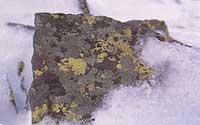
It is usually algae, chlorofícea (green algae) or cyanophyte (green-blue algae), usually located between the filaments of the fungus (hifen). It is often unicellular and has no sexual reproduction capacity, but is free.
It is difficult to explain the success of this type of symbiosis.
The fungus takes advantage of the glycids produced by the algae during photosynthesis, taking advantage of special hyphae that are introduced inside the algae for absorption. These hyphae can be of two types. Some, called roturators, penetrate to the cytoplasm of the algae, where they absorb the glucides. The others, called apprehensions, do not reach the cytoplasm, but are closely united around the algae and often cross the cell wall of it. In any case, for the fungus it is essential that the algae be served from the produced glucids, so it is not convenient that the algae suffer excessive damage.
Since cyanophytes are able to fix atmospheric nitrogen and synthesize substances containing groups of nitrite, nitrate or ammonium, in the liquid containing this type of ficosinbionte, the fungus also obtains nitrogenous substances.
The benefit that the algae receives is not so clear. It probably takes water and minerals from the tissues of the fungus and, in addition, is among hyphae of the fungus, protected from excessive illumination or other environmental factors.
However, the main advantage could be another. Lichen often grows in places that must withstand very harsh environmental conditions (sudden temperature changes, long periods of time without humidity, etc. ). In these places only the fungus could not get food and the climate, or other external factor, could destroy the algae. Convivir, however, can occupy these ecological spaces inadequate for other plants.
In several lichens, formed by green algae, special structures called cephaloids are often found. As mentioned above, these algae are able to fix atmospheric nitrogen and produce nitrogenous substances, so the fungi also take advantage of these substances. Sometimes there is a second fungus, which often lives as an authentic parasite.
As we have said, fungi have the capacity to reproduce sexually and to do so develop fruitful bodies (called by their form apothecia, peritecios or pseudothecios). In these bodies of fruit spores develop and generally there are no algar. Therefore, when adult spores are dispersed in the air, they do not carry algar with them and when they cool it is essential to find a algae to form a new lichen.
This form of spores dispersion is not very adequate, since if the fungus does not find algae it cannot live. However, in a few lichens, the fructiferous body also contains algae, so when developing and releasing the spores are dispersed together with the algae, facilitating notably the formation of a new lichen.

Sexual reproduction generates many problems, so it is often much more appropriate to carry out an asexual reproduction. To do this, some lichens develop unique structures called silences. These structures are actively separated by forming a new lichen by moving away from the lichen stem. Other lichens do not develop special structures and perform this form of reproduction through fragments that are casually separated from the lichen stem.
Liken's growth is very slow. Those who grow the most (some yellow lichen) elongate between 1 and 2 cm/year, but usually only grow a few mm/year. The duration of life is also very different among lichen. For example, epiphyte lichens of the tropics, during a year of life, can live hundreds or thousands of years of crustaceans of several lichens that grow in the Archaic or in the Goimendes.
On the other hand, they grow anywhere and are very abundant, calculating that they cover 8% of the land surface. They are very abundant in the tropical forests and temperate mountain forests of the mountainous regions, where high atmospheric humidity makes them grow easily in the branches and trunks of the trees. They abound also in the tundra, which is often the main plant of the area. However, as has already been indicated, they do not grow near industrial or urban areas, where there is an excess of sulfur dioxide. In general, although they grow anywhere in the world, they only predominate in areas inappropriate for higher plants. A total of 20,000 species have been classified.
Different types of stems
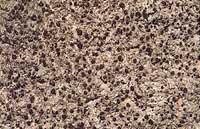
The shape of the lichen body (stem) is not currently of great importance in the classification of lichen, but it is of great help in the identification of lichen. As has already been indicated in most cases, the main component of lichen is the fungus, which is the one that delimits the shape of the stem. This can vary greatly from one lichen to another, but several general models can be distinguished:
However, as always happens, there are forms that do not belong to these general models, such as gelatinous lichen, and lichen with characteristics of several groups.





